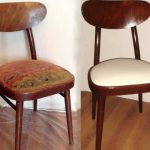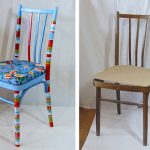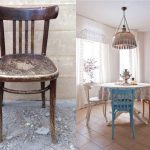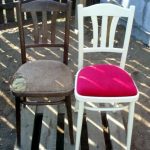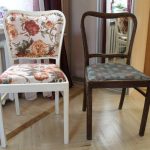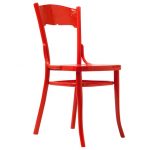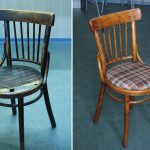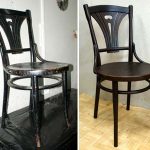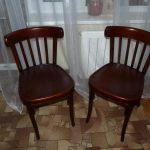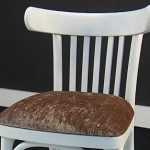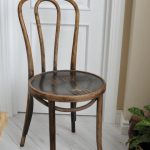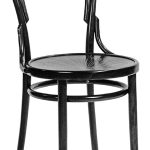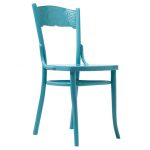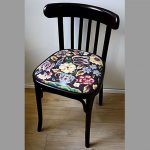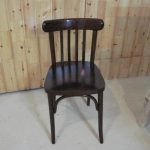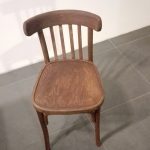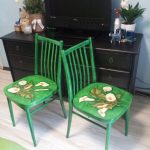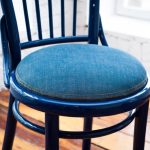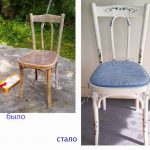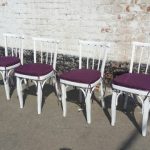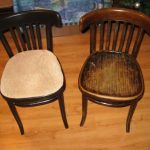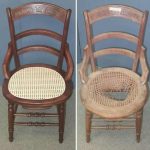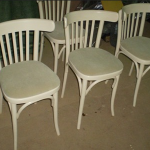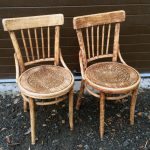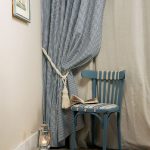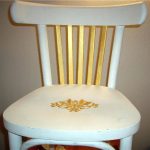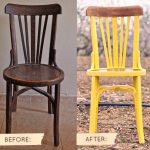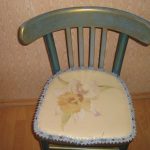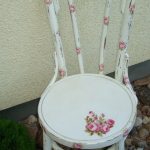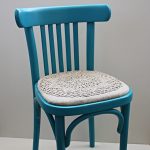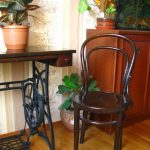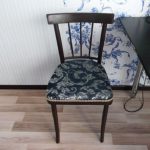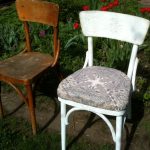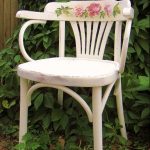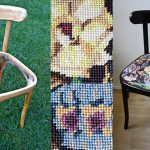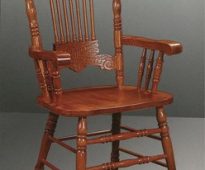 From the stool to the transformer chair - learn to make chairs with your own hands
From the stool to the transformer chair - learn to make chairs with your own hands
How to make the restoration of a Viennese chair with your own hands. Tips and workshop
Viennese chair - the simplest in design and quite comfortable to use. The Viennese chair begins its history from the middle of the nineteenth century. It was invented by the master from Vienna Michael Tonet.
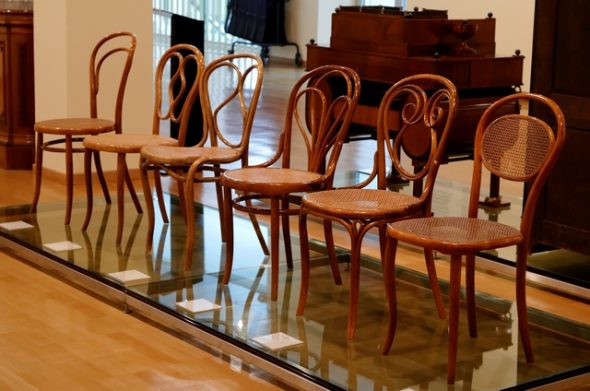
Brothers Chairs in Vienna's Museum
He introduced the technology of bent under steam wood. Already at that time he gained immense popularity among various strata of society. The chairs were made by Thonet, and the chair was No 14. The popularity of this product at that time can be compared to the popularity of Ikea furniture these days.
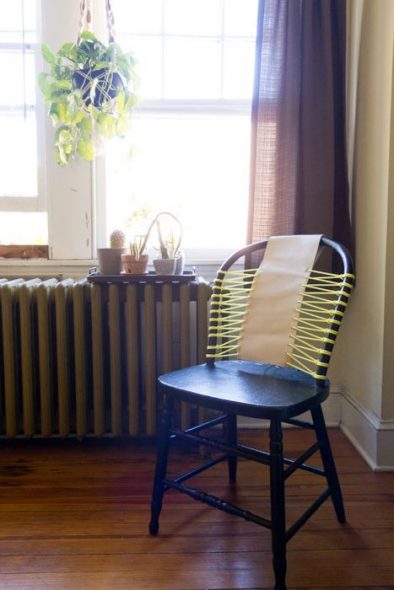
Restoration of the Viennese chair with your own hands with the replacement of the backrest, which will transform the old chair into a modern interior item
Restoration of a Viennese chair with your own hands will not cause any special problems for the reason that it is quite simple to manufacture. The chair consists of two arcs, which are combined with the rear legs, the seat is made in the form of a circle, the front legs and a dozen screws. That's the whole design of the Viennese chair. The second reason for the restoration of the Viennese chair is that it is quite old, and therefore quite a strong thing. After she gets a second life, she will serve for quite a long time in the house or in the country. The third reason is purely practical. If you learn to restore the old furniture, you can arrange master classes for the restoration of Viennese chairs with your own hands. This can be a job that will generate significant income.

A series of “New Retro” is to give the old chairs an original look.
Before restoration it is necessary to prepare the following tools for work.
- Hammer.
- Clamps
- Staples
- Screwdriver.
- Screwdriver.
- Wooden mallet
- Sandpaper, solvent.
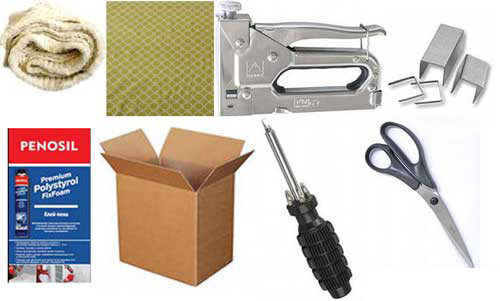
Tools for the restoration of chairs
Required materials for work:
- nails;
- screws;
- foam rubber;
- glue;
- solvent;
- paint.
Content
Completing of the work
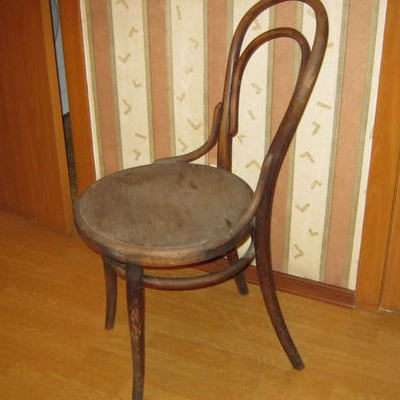
It looked like an old chair before restoration
First you need to clean the chair from dirt and dust. Already with this it is possible to peel the paintwork. It is not recommended to keep the chair in water for too long; wood tends to absorb water. After washing it is necessary to dry the chair well.
The restoration of the Viennese chair begins with an external examination. During the inspection, the following possible defects are identified:
- the legs of the chair are loose;

Lower arch, burst at the top
- there are cracks or chips on the varnish coat of the chair;
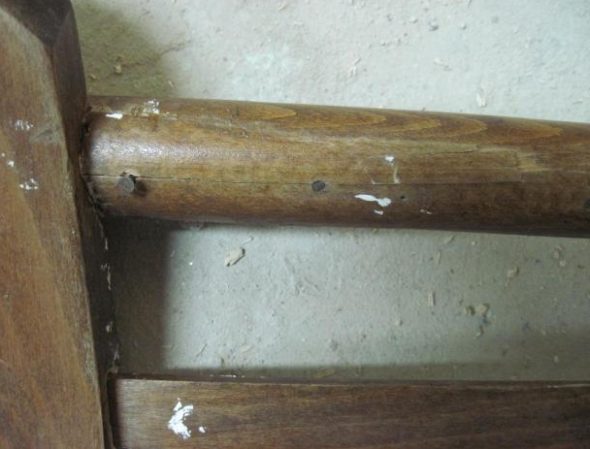
Damage to the outside of the seat frame
- the seat material has fallen into disrepair.

Damage to the back of the chair
To repair the legs of the chair you need to disassemble it completely. For successful and quick assembly of the chair, it is necessary to mark the parts to be disassembled so as not to forget the order of fastening the parts to each other. Here are possible options.
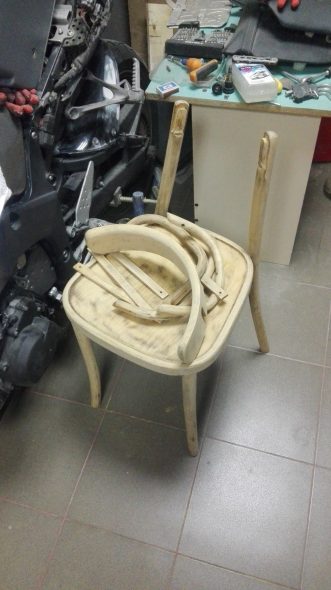
Dismantling parts of the chair
The legs are fastened on the thorn - groove principle. In this case, you must gently loosen the legs of the mounts. In the same way removed the back and seat.
It is much easier and faster to disassemble the chair, assembled on the screws. He is disassembled with a screwdriver, using oil to lubricate the screws.With the use of oil the screws will get out much easier and faster. Then you do not have to put a significant effort to the screwdriver.
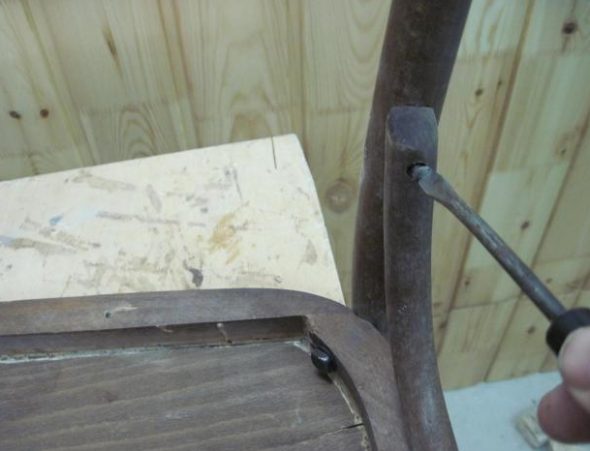
We begin to disassemble the chair for restoration
Details of the chair can be glued. Glue can be heated in two ways. Heat the parts of the glued parts with a hairdryer or a rag soaked in hot water. In any case, the glue will become softer. Details of the chair are easily separated from each other.
The next stage is the restoration of structural elements. It is necessary to remove deep cracks, chips, places that have been badly damaged by insects. Deep cracks need to be filled with glue and tightened with clamps. Small chips or small cracks are filled with glue and tape together. A mixture of sawdust and glue can remove very large chips or cracks. After this, the parts should dry.
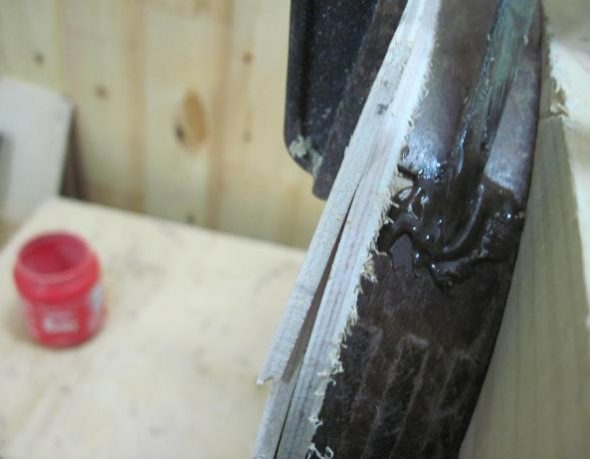
The defect of the outer part of the seat frame is eliminated with epoxy putty
Grinding parts
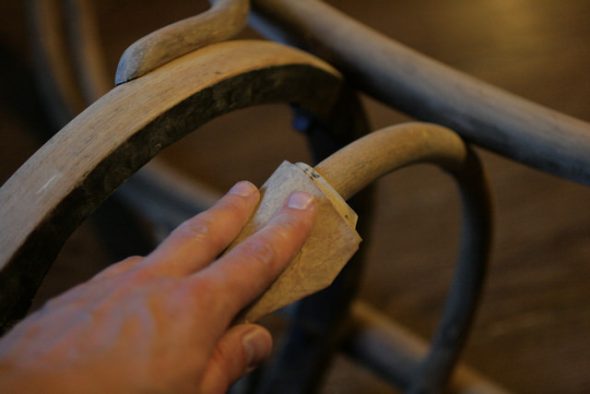
First, a rough sandpaper remove the top layer with dirt and paint to the tree
Grinding is performed either by grinding machine or by hand. First, the parts are polished with coarse sandpaper, then fine-grained.

With the help of a sander you can grind the outer surface of the seat
The process is considered complete when the surface of the parts becomes completely smooth and completely free from old varnish and paint.
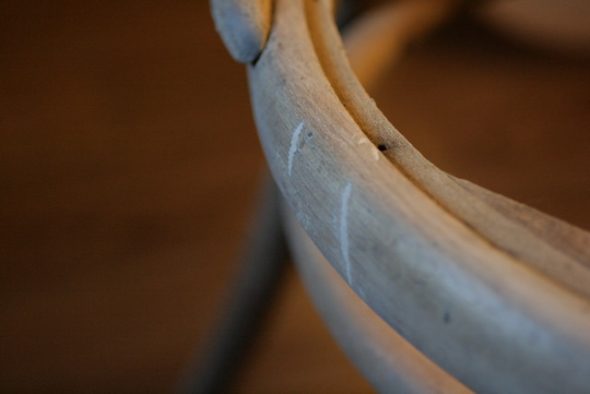
We putty small dents and chips with special wood filler
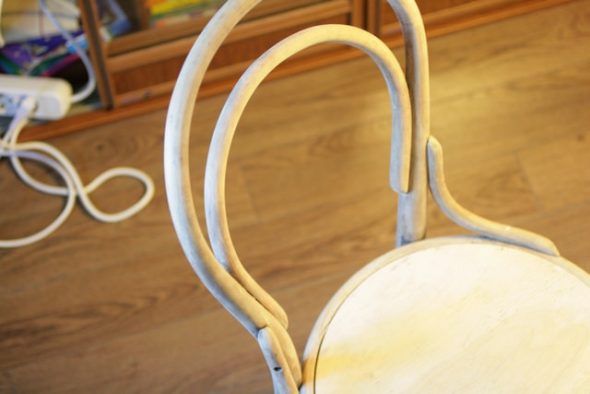
After the putty has dried, once again sand the entire chair fine sandpaper
Repair fasteners chair
The ends of the worn parts included in the connection between each other are sawn several inches deep. Then a wedge is driven between them. Thus, the expanded part closely sits on a seat.
When working with antiques, a thin hole is made in the joint seam. Then there join wood glue. In case of strong spike wear, a wedge is made. The wedge is made of sliver, smeared with glue. It must be inserted into the hole along with the part during assembly.
Frame assembly
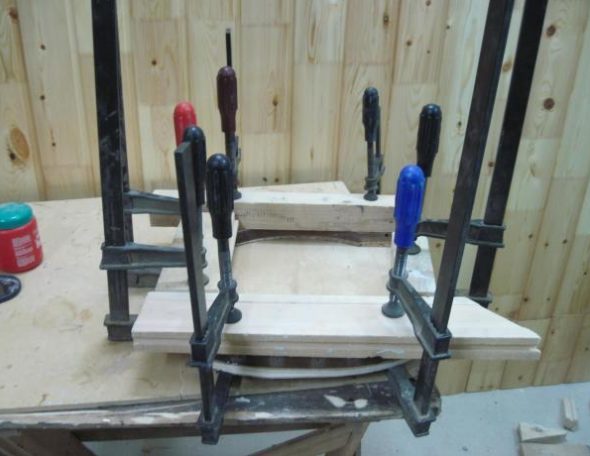
We smear glue with a thick layer on the seat frame and clamp the workable together with clamps
All parts are glued together. Gluing places are fixed.
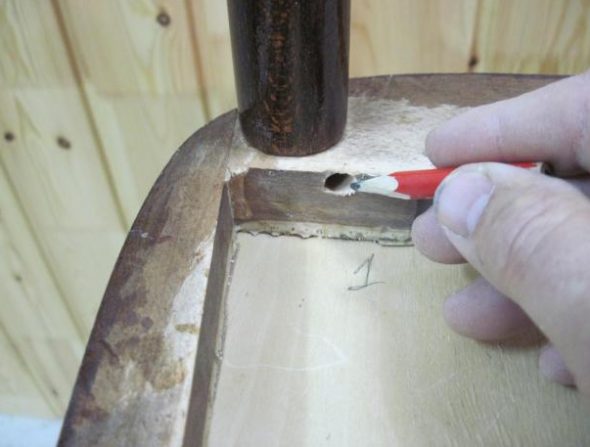
We begin to assemble and glue the chair
The old upholstery is removed so that it can be used as a pattern. Made new upholstery. The material is chosen for every taste or color. It can be from fabric, leather or any other. It is important to consider the combination of the upholstery color and the color of the chair frame. If problems arise with this, a color combination map is used.
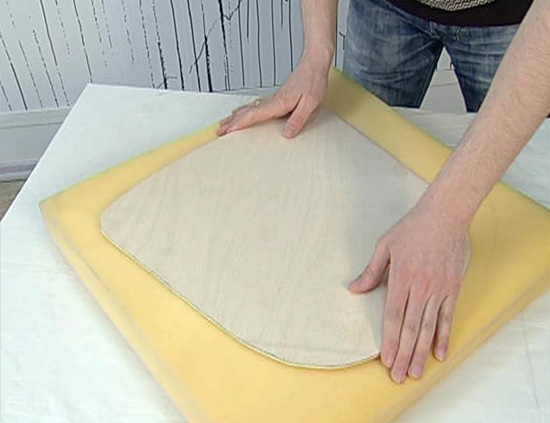
Cut foam rubber for a soft seat on the chair
Then the shape of the seat must be cut foam. The foam rests on the seat, the material is pulled from above and secured with a stapler or other means.
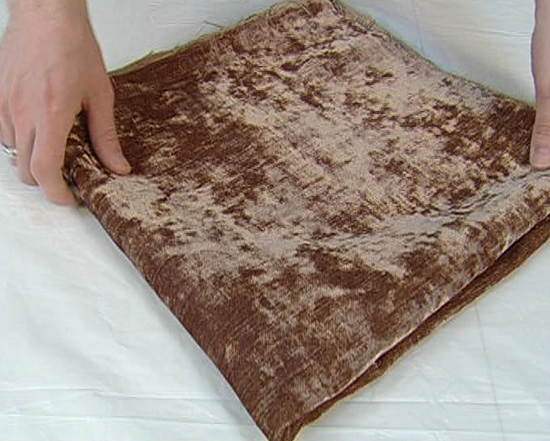
We cover the seat with a soft chenille

Painted Viennese chair with soft seat
Frame painting (decoration)

If you want to keep the tree drawing, you need to cover the chair with wood stain.
All dried frame products can be processed in any way. It can be paint, stain, varnish, gold leaf.

Stool after painting with stain
On the dried frame, a seat is fastened with screws or metal corners. Now the Viennese chair is ready for use for its intended purpose in a new form.
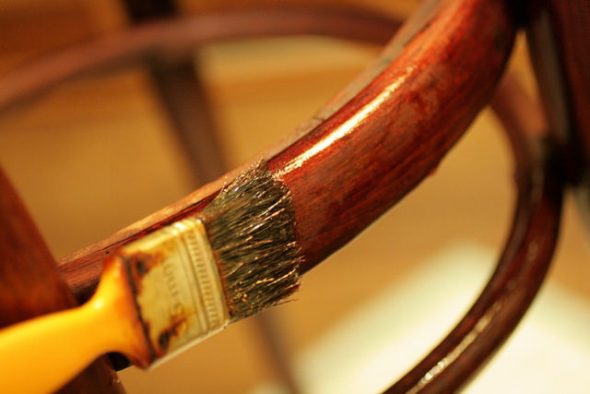
The last stage - varnish chair covering
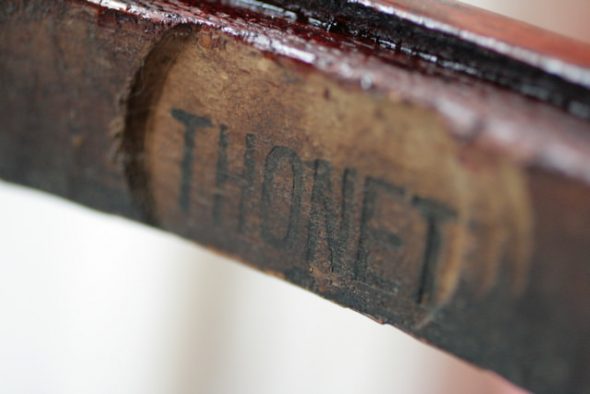
Native inscriptions confirming the original origin
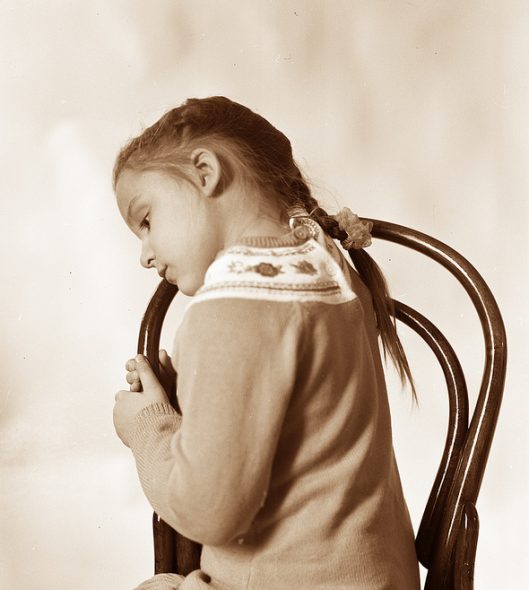
Portrait of a girl sitting in a Viennese chair
Video: Repair of a Viennese chair
50 ideas for the restoration of Vienna chairs do it yourself:
 From the stool to the transformer chair - learn to make chairs with your own hands
From the stool to the transformer chair - learn to make chairs with your own hands
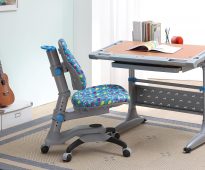 Baby chair, height adjustable
Baby chair, height adjustable
 Decoupage chair - breathe new life into old furniture
Decoupage chair - breathe new life into old furniture
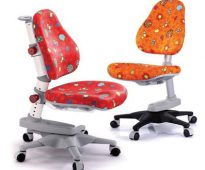 What should be a chair for a first grader
What should be a chair for a first grader
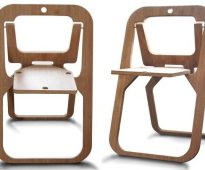 How to make a folding chair out of plywood do it yourself: step-by-step instructions for making
How to make a folding chair out of plywood do it yourself: step-by-step instructions for making

